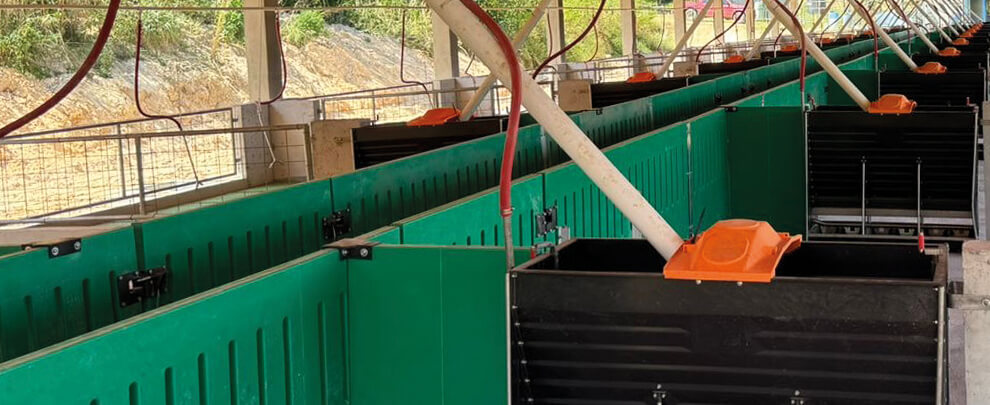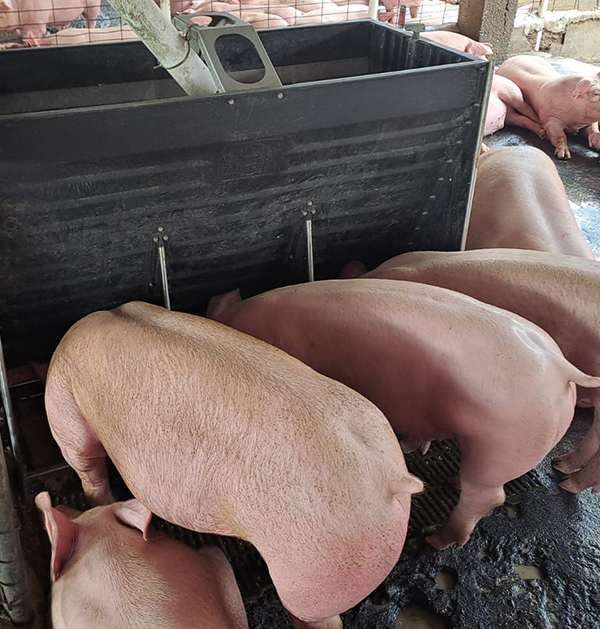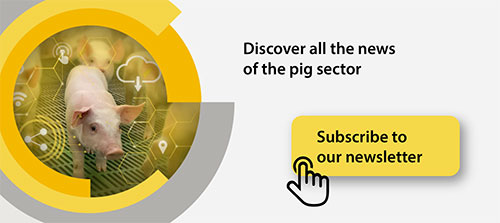Blog
Blog

C. Pitty: “The SF3D’s design improves the feed conversion ratio”
21st October 2025 - Success stories
Importadora de Insumos de Panamá has trusted Rotecna for over three decades to improve efficiency and welfare on its pig farms. In its most recent expansion, a fattening unit for 660 pigs, the company again opted for the quality and durability of Rotecna’s products. This time, it installed SF3D feeders, designed to meet the demands of today’s genetics, and polypropylene panels that improve hygiene and maintenance under Panama’s demanding climatic conditions. We speak with engineer and company lead Carlos Pitty about the installation, the reasons behind his technical decisions, and his view of the swine sector in Panama.

Carlos Pitty in his office in Panama. Photo: Carlos Pitty.
What is the origin of this farm?
Toza Farm is a fattening unit that forms part of Importadora de Insumos de Panamá’s leading site. The latest expansion responded to the need to increase capacity, incorporating a new building with space for 660 animals. Its design accounted for Panama’s climate: high temperatures, high humidity, and a long rainy season lasting roughly nine months. To address the challenges of fattening pigs, we have chosen to integrate Rotecna technology, which has delivered excellent results here for over 30 years.
How is it laid out?
The facility has seven barns arranged to make animal handling efficient. Each barn is equipped with automated feeding systems, SF3D feeders, and plastic partition panels. The array of pens within the barns supports homogeneous groups, which improves feeding efficiency and sanitary control.
"We have chosen to integrate Rotecna technology, which has delivered excellent results here for over 30 years."
Why choose the SF3D feeder?
Over time, genetic progress has significantly changed animals’ nutritional needs. We initially used the Grow Feeder, but as more efficient lines have developed, pigs have a greater appetite and grow faster. Feeders designed 30 years ago do not always meet current demands. Planning for the long-term, because when you build a farm, you plan decades, even if “tomorrow” arrives sooner than expected, we opted for the SF3D. We believe it aligns with the demands of the coming years. The feeder offers high availability of both wet and dry feed, a significant advantage even in Panama’s high‑humidity environment. It also enables better feed utilisation by the animal, improving feeding conversion ratio (FCR) and contributing to overall farm performance.
How quickly do animals adapt to the feeder?
Quickly. Pigs arriving here come from sites where they have already been fed with feeders such as the TR4 and TR7D. That progressive transition between models makes learning easier and significantly reduces stress associated with equipment changes, ensuring steady intake from day one. In addition, the feeder’s design improves the feed conversion ratio, optimising feed use and contributing to more efficient, profitable production.

Pigs easily adapt to the Sf3D feeder. Photo: C. Pitty.
You also installed Rotecna panels. What advantages do they provide?
This is the first time we have incorporated Rotecna panels, and the experience so far has been very positive. What stood out immediately was the ease and speed of installation and the high level of cleanliness they maintain. In Panama, cement dividers or wire structures are commonly used, but they tend to corrode over time due to the high humidity. Concrete blocks also pose hygiene issues because their porous surface is hard to clean effectively. We chose to innovate with plastic panels and, after roughly four months of use, have seen a clear improvement in overall hygiene. The panels’ smooth surfaces facilitate disinfection, resulting in improved sanitary conditions and more efficient daily cleaning.
What other Rotecna products are installed?
We have been working with Rotecna for over 30 years and have incorporated nearly the entire catalogue. One of the most innovative solutions was the Tecnapur solids separator, installed in two units, which significantly improved waste management and environmental performance. We also use the automatic feeding system, which has improved operational efficiency and optimised feed supply at each production stage. As for feeders, we historically used the Grow Feeder but have adopted models such as the TR2 over time to adapt to new genetics. We evaluate each new Rotecna launch because each feeder type can better suit certain phases or facility configurations. That flexibility lets us choose the most suitable solution for our specific needs.
Overall, what do you value about Rotecna?
We especially value Rotecna’s constant innovation, as well as the reliability and durability of its products, even under Panama’s demanding conditions of high humidity and heat. The technology fits the environment and the requirements of modern swine production. We also appreciate the ease of installation and maintenance, and the focus on biosecurity and animal welfare. For us, Rotecna is not just a supplier but a key technology partner in our productive evolution.
"Our biggest challenge is promoting a biosecurity culture at every level."
What are your main health concerns?
Panama remains relatively free of swine diseases, which is a significant advantage. Our primary concern is not so much the presence of disease as the lack of awareness among some producers about the importance of prevention. On our farms, we implement strict biosecurity: anti‑bird fencing, health controls at entrances, and other preventive measures to reduce pathogen entry. Many small and medium producers still do not apply these essentials, which threatens the entire national production system. Our biggest challenge is promoting a biosecurity culture at every level because the industry’s health depends on shared responsibility. Prevention is not a cost; it is a key investment for the sector’s sustainability and competitiveness.
What are the farm’s future goals?
Our short-term goal is to expand installed capacity to allow for an additional week of feed availability, thereby maximising the animals’ weight-gain curve. That would directly improve productive efficiency and per‑cycle profitability.
What is your view of Panama’s swine sector?
Panama competes in an open market against powerhouses like Brazil and the United States, which dominate the production of essential inputs such as corn and soy. This significantly raises our production costs, compounded by import tariffs. We are also concerned about the quality of imported meat, which in many cases has been stored for up to two years. This contrasts with fresh domestic beef, which offers better flavour, freshness, and food safety. The major challenge is educating consumers about these differences and promoting national products, not only for their quality but also for their positive impact on jobs and the local economy.








